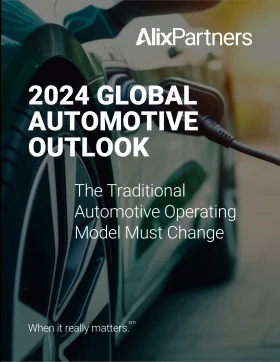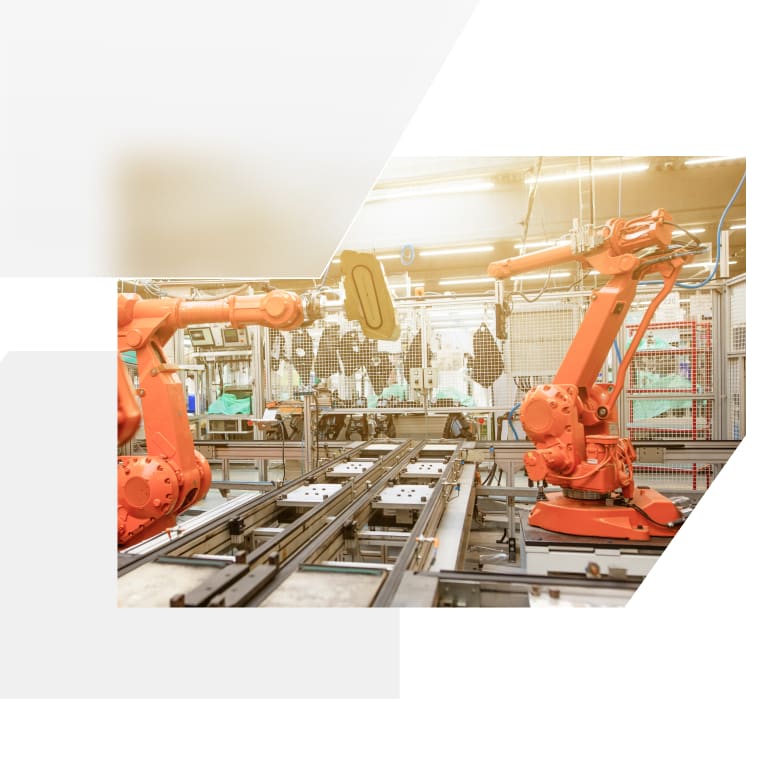27 June 2024
China brands poised to capture one-third of the global automotive market by 2030; software-defined vehicles to be a major disruptor; spotty consumer natural demand in some markets creates a “powertrain puzzle” for vehicle electrification.
As several transformative forces accelerate, the entire industry must be willing to change its operating model—from the way a vehicle is engineered to how revenue is captured over that vehicle’s lifetime to how OEM-supplier relationships are set up.
The 21st edition of the AlixPartners Global Automotive Outlook finds that Chinese NEV automakers are increasingly setting the standard for an industry historically steered by the West, Japan, and South Korea. By 2030, Chinese brands will be a dominant force around the world, selling 9 million units outside China, contributing to a 33% share globally. Growth will be built on their current cost advantage, which reaches as much as 35%; product-development times that are twice as fast (as little as 20 months); much higher vertical integration (as much as 75% for some Chinese NEV companies); and up to 20 times more over-the-air (OTA) post-launch updates per vehicle model per year, allowing both for lower costs and ever-evolving products.
On top of that (and, really, as part of that), add software-defined vehicles (SDVs), which are nothing less than the complete reinvention of automobile architecture—making software drive functionality more than hardware. Early examples include products from some NEV startups in China, showing the power of a clean-slate approach. SDV evolution will come in four stages, and our analysis maps them out in detail.
Finally, and in the near term, there’s the powertrain puzzle. Many thought that this year's full battery-electric vehicle (BEV) sales would be past the tipping point into mass adoption. That hasn’t been the case in many markets, leaving many companies with tough choices to make right now. How much and for how long do I continue to invest in ICE (internal combustion engine) products? Will PHEVs (plug-in hybrid electric vehicles) and REEVs (range-extended EVs) take off and be substitutes for BEVs for consumers? How can I afford the cost of financing multiple approaches?
And this is all coming at a time when our Outlook forecasts just 3% per-year sales growth globally through 2030 (most of it in China), including near-stagnant growth of less than 1% per year in North America and Europe.
And for suppliers, this comes at a time when they’ve added, mostly in response to the COVID pandemic and its attendant shortages, more than $25 billion in “just-in-case” inventories—a huge weight that could sink many Western suppliers’ balance sheets going forward if “middle-ground” alternatives—between just-in-time and just-in-case—aren’t found. (Perhaps call it “just-right” inventory?)
Clearly, the fundamental approaches of the entire auto industry need to transform. Which is why our Outlook also puts forward something we call “A Modern Operating Model for the Modern Auto Industry.”
It begins with taking a clean-sheet, “first principles” approach to your business (i.e., stripping away all past orthodoxies and conventions and thinking about how you would approach your business as an outsider might) and goes through the core elements of everything from organizational design to optimal supply-chain design to the best new commercial models all the way down to how and why OEM-supplier contracts need to be revamped.
Tomorrow’s auto industry is going to be radically different from today’s. Is your company adequately prepared?
If you’re an automotive- or related-industry executive and would like a deep-dive, personalized review of the entire 2024 AlixPartners Global Automotive Outlook:


